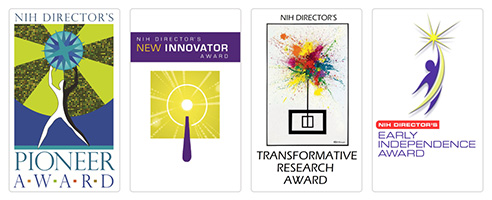2020 Diversity Statement
The NIH is committed to encouraging diversity in the workforce while funding the best science. As part of NIH’s continual monitoring efforts, the NIH Director convened the Advisory Committee to the Director Working Group on High-Risk, High-Reward Programs to examine the Common Fund’s High-Risk High Reward Research Program. The Working Group reported its findings in June 2019.
The Working Group found that the Common Fund's High-Risk High Reward Research program is effective in supporting unusually innovative and impactful research and that under-represented groups overall are not adversely affected by the review processes used. However, the Working Group observed that the applicant pool itself does not reflect the investigator or institutional diversity of the nation’s research workforce.
The Common Fund embraces the findings of the Working Group (see Common Fund response) and is taking a multimodal approach to enhancing applicant diversity. First, the Common Fund is substantially increasing its outreach efforts through presentations at relevant conferences, emailing program information and funding opportunities to institution officials, providing additional website resources for applicants, and hosting informational webinars.
Second, the Common Fund is collaborating with the Center for Scientific Review to pilot anonymized review of Transformative Research Award applications received in response to the FY2021 funding opportunity announcements (RFA-RM-20-013, RFA-RM-20-020, and NOT-RM-20-019). The anonymization seeks to focus the reviews on the merits of the proposed ideas and encourage applications from investigators who might not otherwise apply.
And third, the Common Fund is acting on several of the suggestions and comments received from the scientific community in response to its Request for Information on how application diversity might be enhanced. Actions include strengthening language in the funding opportunity announcements to encourage applicant diversity, reaching out to scientific societies, and highlighting diversity on the program website. Through the continuation of such efforts, we hope to more fully tap into the nation’s potential for exceptionally innovative and impactful research.
The following table displays demographic data comparing the percentage of female applicants, finalists, and awardees for each HRHR award. They show the data for the 2020 cohort and the total over the life span of each award type. Note that these data are voluntarily self-reported by applicants. Some applicants choose not to provide this information.
| Pioneer Award | New Innovator Award | Transformative Research Award | Early Independence Award | |||||||||
|---|---|---|---|---|---|---|---|---|---|---|---|---|
| Cohort Year | Applicants | Finalists | Awardees | Applicants | Finalists | Awardees | Applicants | Finalists | Awardees | Applicants | Finalists | Awardees |
| 2020 | 29% | 36% | 40% | 39% | 33% | 35% | 26% | 17% | 36% | 43% | 36% | 40% |
| Total | 23% | 26% | 31% | 31% | 29% | 35% | 21% | 18% | 20% | 40% | 31% | 28% |



